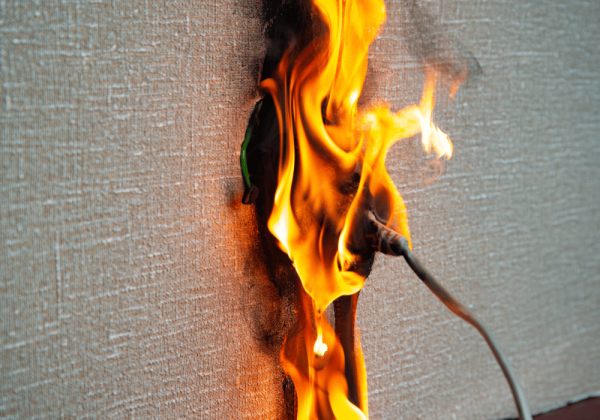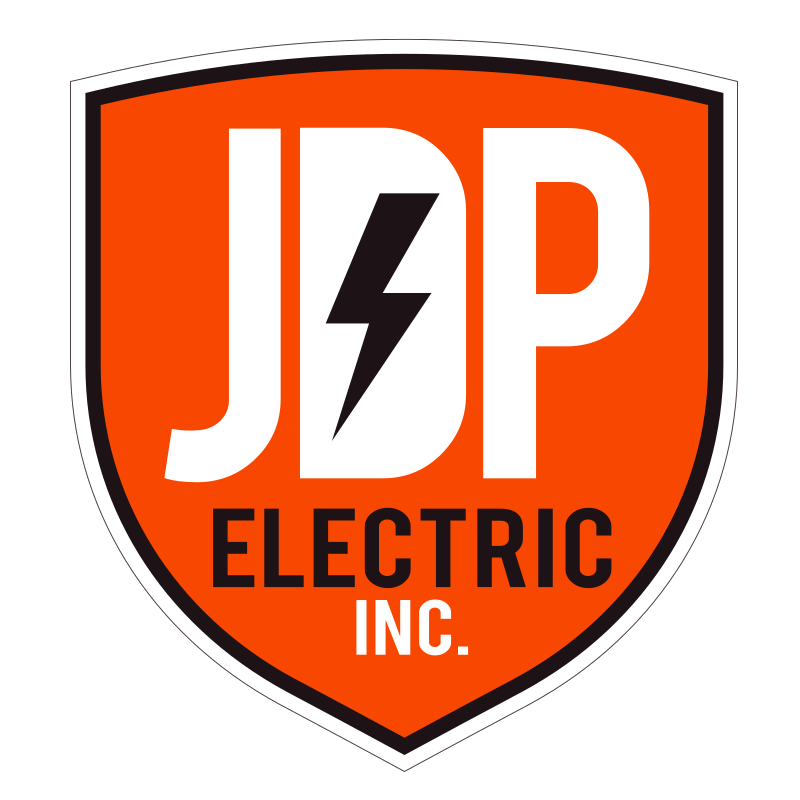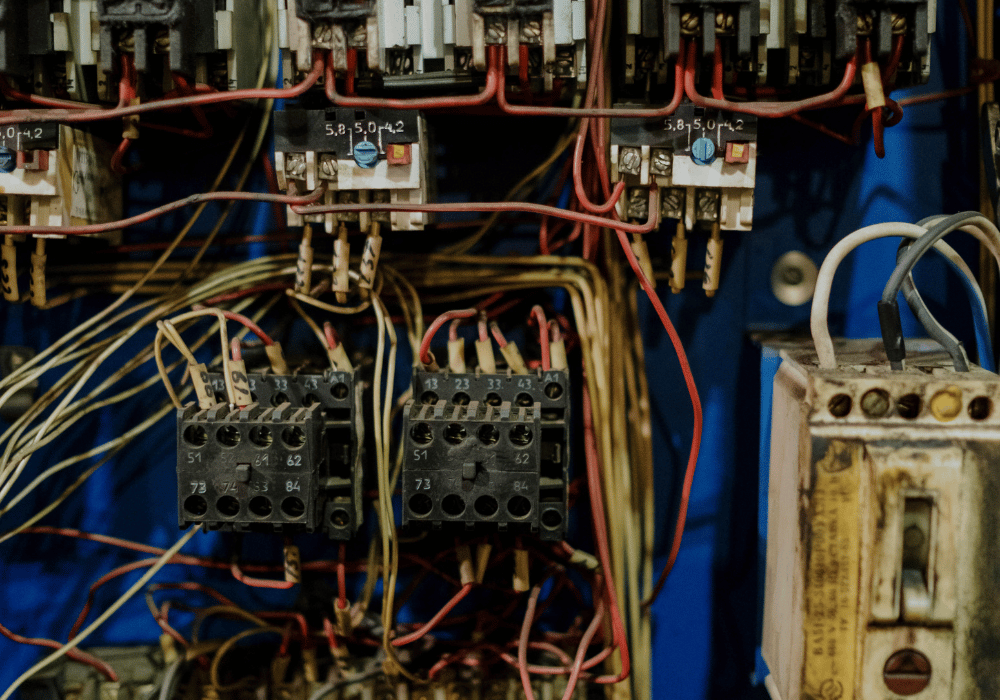Your home’s electrical wiring is its backbone, distributing power to keep everything running smoothly. However, when wiring becomes faulty, the consequences can range from minor inconveniences to severe safety hazards. Understanding the risks and impacts of faulty wiring is essential for protecting both your home and your loved ones. This guide dives into the dangers, signs, and solutions for addressing faulty wiring to maintain safety and efficiency in your home.
Safety Risks Associated with Faulty Wiring
 Faulty wiring poses a significant threat to your home’s safety, making it a top priority for maintenance and inspection. Electrical issues caused by improper or deteriorating wiring can lead to fires, shocks, and other dangerous situations. The most alarming risk is house fires. Faulty wiring, such as damaged insulation, frayed cords, or overloaded circuits, can ignite flammable materials, causing devastating property damage and potential loss of life.
Faulty wiring poses a significant threat to your home’s safety, making it a top priority for maintenance and inspection. Electrical issues caused by improper or deteriorating wiring can lead to fires, shocks, and other dangerous situations. The most alarming risk is house fires. Faulty wiring, such as damaged insulation, frayed cords, or overloaded circuits, can ignite flammable materials, causing devastating property damage and potential loss of life.
Another concern is the risk of electrocution. Exposed or poorly connected wires increase the chances of electrical shocks, which can lead to serious injuries or fatalities. This risk is particularly high if you have children or pets in your household. Finally, faulty wiring can compromise the functionality of essential safety devices. For example, if wiring to smoke detectors or security systems is flawed, these critical devices may fail to operate during emergencies, leaving your home vulnerable.
How Faulty Wiring Impacts Energy Efficiency
Faulty wiring doesn’t just put your safety at risk; it can also negatively affect your home’s energy efficiency. Poor wiring leads to energy waste, higher utility bills, and premature wear on electrical appliances. One of the primary inefficiencies arises from resistance within damaged or outdated wiring. When wires degrade or connections loosen, it takes more energy for electricity to travel through the circuit, resulting in wasted power. This increased resistance not only raises electricity costs but also puts unnecessary strain on your entire electrical system.
Electrical leaks are another common issue. Faulty wires can cause short circuits or ground faults, where electricity diverts to unintended pathways. These energy losses might be small individually, but over time, they add up, significantly reducing your home’s overall efficiency. Finally, damaged wiring accelerates wear and tear on appliances. Voltage drops or surges caused by inconsistent electrical flow can shorten the lifespan of devices such as refrigerators, HVAC systems, and electronics. This results in more frequent repairs or replacements, costing you time and money in the long run.
Warning Signs of Faulty Wiring
Being aware of the warning signs of faulty wiring can help you address issues before they escalate into major problems. If the lights in your home flicker or dim unexpectedly, the wiring may be struggling to deliver a consistent flow of electricity. This can occur due to loose connections or overloaded circuits and often signals an underlying wiring issue. A burning odour near outlets or switches is a strong sign of overheated electrical components. Similarly, discoloration or scorch marks on outlets can indicate that the wiring behind them is overheating or sparking.
While occasional breaker trips are normal, frequent occurrences could mean that your system is overloaded or that wiring faults are creating unstable connections. This is especially concerning if tripping occurs without a clear reason, such as running too many appliances on one circuit. If outlets or light switches feel warm to the touch, that’s a red flag. This can be caused by current flowing through damaged wires, which generates excess heat and increases the risk of fire. Electrical systems should operate silently. Buzzing or humming noises near outlets, switches, or circuit breakers are signs that wires may be loose, improperly grounded, or overloaded.
The Long-Term Costs of Ignoring Faulty Wiring
 Neglecting to address faulty wiring can lead to mounting expenses and irreversible damage. Beyond the immediate risks, this oversight can create financial, legal, and personal consequences in the long term. One significant cost is higher insurance premiums. If faulty wiring leads to a fire or other damages, insurers may view your home as risk-prone, resulting in increased premium rates. Some policies may even deny coverage for damages if it’s proven that wiring issues were ignored.
Neglecting to address faulty wiring can lead to mounting expenses and irreversible damage. Beyond the immediate risks, this oversight can create financial, legal, and personal consequences in the long term. One significant cost is higher insurance premiums. If faulty wiring leads to a fire or other damages, insurers may view your home as risk-prone, resulting in increased premium rates. Some policies may even deny coverage for damages if it’s proven that wiring issues were ignored.
Additionally, unaddressed wiring issues can diminish your home’s resale value. A home inspection during the selling process will flag electrical problems, deterring potential buyers or leading to costly repair demands before the sale can proceed. Over time, small electrical problems tend to spiral into larger ones. For example, minor overheating in one section of wiring can spread, causing systemwide failures. Tackling faults early saves you from costly emergency repairs or total rewiring needs later down the line.
How to Address Faulty Wiring in Your Home
Addressing faulty wiring promptly is crucial for ensuring safety and efficiency. Regular electrical inspections are the first step in identifying problems before they escalate. Professional electricians can assess the condition of your wiring, pinpoint areas of concern, and recommend solutions tailored to your home’s needs. Older homes often have wiring systems that are not equipped to handle modern electrical demands. If your home was built several decades ago, consider upgrading outdated wiring to meet current safety standards and accommodate today’s appliances.
Electrical work is complex and poses significant risks if done improperly. Avoid attempting DIY repairs, even for what appear to be small problems. Licensed electricians have the experience and tools needed to address issues safely and efficiently. Managing your home’s electrical usage can also help prevent wiring from becoming overloaded. Avoid plugging too many devices into a single outlet or circuit, and unplug appliances when not in use to reduce strain on the system. Preventive measures, such as surge protectors and circuit breakers, offer additional safeguards for your electrical system. These devices can prevent voltage spikes or short circuits from causing damage, further protecting both your wiring and appliances.
Faulty wiring is a serious concern that can jeopardize both the safety and efficiency of your home. Recognizing the warning signs, addressing issues promptly, and investing in professional inspections are vital steps for maintaining a secure and energy-efficient environment. While it may seem like an inconvenience to deal with wiring problems, the long-term benefits far outweigh the risks of ignoring them. Whether you’re upgrading an old home or maintaining a newer one, keeping your wiring in optimal condition ensures peace of mind and protects your investment. Don’t wait for minor issues to turn into major problems—take action to keep your home safe and efficient.

